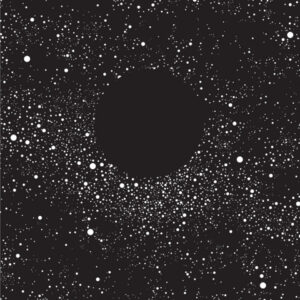I’m not the crazy-obsessive music fan I once was, so it’s become something of a reliable surprise when nutso shambolic trio Liars puts out something new every couple of years. This year, it’s the jaunty, vibrant Mess. With album art comprised of a snarl of multicolored yarn that looks either like George Clinton’s dreads or the monstrous progeny of Fruity Pebbles and the Flying Spaghetti Monster, Mess is a similarly chipper tangle of dance-tronic music, just as different as WIXIW was from Sisterworld was from Liars or Drum’s Not Dead, etc. It’s so much more … fun. Angus Andrew’s wound-down vocals on “Mask Maker” skirt the fine line between electronic music parody and homage; savvy listeners will pick up on it right away. Also check out “Pro Anti Anti,” “Darkslide” and “Left Speaker Blown.” (M. Brianna Stallings)
Elton John Goodbye Yellow Brick Road (Universal Music)
Forty years ago, Elton John and Bernie Taupin gave up on their successful three and a half-album project of Anglicizing Americana to embrace a sumptuously melodic, thoroughly ass-kicking, highly listenable version of glam rock. The result was Goodbye Yellow Brick Road; partially based in Taupin’s flair for the nostalgic, it relied on a hard-rocking band and dynamic composition to deliver the goods. A double-album with no discernible filler, it set the standard for John’s mid-career work. This 40th anniversary reissue affords new listeners and hardcore fans alike the opportunity to hear this grandiose recording in full bloom just in time for spring. Brimming with ferocious blasters like “Grey Seal” and “All the Girls Love Alice,” this recording also features lovely sonic anomalies like “This Song Has No Title” and “Your Sister Can’t Twist (But She Can Rock ’n Roll).” Skip the hit singles if you must, but this album is always essential listening. (August March)
Golden Retriever Seer (Thrill Jockey)
Matt Carlson and Jonathan Sielaff comprise Portland, Ore.-based duo Golden Retriever. Often characterized as drone, their musical output has clearly grown beyond the reach of that affiliation. On their new release Seer, five tracks that were two years in the making, the band breaches the droning wall of sound in search of tuneage that has a more complete, less static feel to it. Verging on ambient or straight-up electronica, they are mostly successful, and tracks such as “Flight Song” show off the musicians’ uncanny ability to work with elusive microtonal shifts and compelling leitmotifs. Sielaff’s use of the bass clarinet (his primary instrument), especially on the first track, “Petrichor,” has free-jazz components that add to the fullness of the compositions and serve to balance Carlson’s emotive, but sometimes randomly glitchy electronic contributions. (August March)






